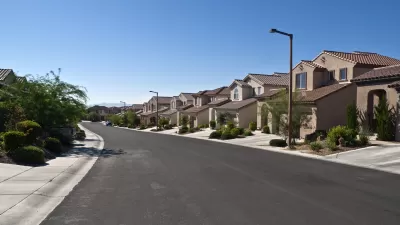More and more lawns across the country are getting axed and replaced with gardens.
"If grass were a food crop, it would be the largest in the United States. Imagine nearly 50,000 square miles of lawn, about the size of Mississippi, often doused in pesticides, fed with chemical fertilizers, protected by weedkillers, drenched in 270 billion gallons of water a week and cut with mowers that emit as much as a third of some types of urban air pollution."
"Oregon's $500 million grass-seed industry has a huge stake in America's lawns, supplying 99 percent of the nation's ryegrass seed and more than half of all grass seed."
"Since the end of World War II, a perfectly trimmed and watered front lawn has been the homeowner's declaration of civic responsibility. But several factors -- rising food costs, environmental awareness, concerns about food safety and a desire for local food -- have caused the pendulum to swing."
"Many Americans now see lawns as wasted opportunity."
FULL STORY: Is it time to kill your lawn?

Planetizen Federal Action Tracker
A weekly monitor of how Trump’s orders and actions are impacting planners and planning in America.

Maui's Vacation Rental Debate Turns Ugly
Verbal attacks, misinformation campaigns and fistfights plague a high-stakes debate to convert thousands of vacation rentals into long-term housing.

Restaurant Patios Were a Pandemic Win — Why Were They so Hard to Keep?
Social distancing requirements and changes in travel patterns prompted cities to pilot new uses for street and sidewalk space. Then it got complicated.

In California Battle of Housing vs. Environment, Housing Just Won
A new state law significantly limits the power of CEQA, an environmental review law that served as a powerful tool for blocking new development.

Boulder Eliminates Parking Minimums Citywide
Officials estimate the cost of building a single underground parking space at up to $100,000.

Orange County, Florida Adopts Largest US “Sprawl Repair” Code
The ‘Orange Code’ seeks to rectify decades of sprawl-inducing, car-oriented development.
Urban Design for Planners 1: Software Tools
This six-course series explores essential urban design concepts using open source software and equips planners with the tools they need to participate fully in the urban design process.
Planning for Universal Design
Learn the tools for implementing Universal Design in planning regulations.
Heyer Gruel & Associates PA
JM Goldson LLC
Custer County Colorado
City of Camden Redevelopment Agency
City of Astoria
Transportation Research & Education Center (TREC) at Portland State University
Jefferson Parish Government
Camden Redevelopment Agency
City of Claremont





























